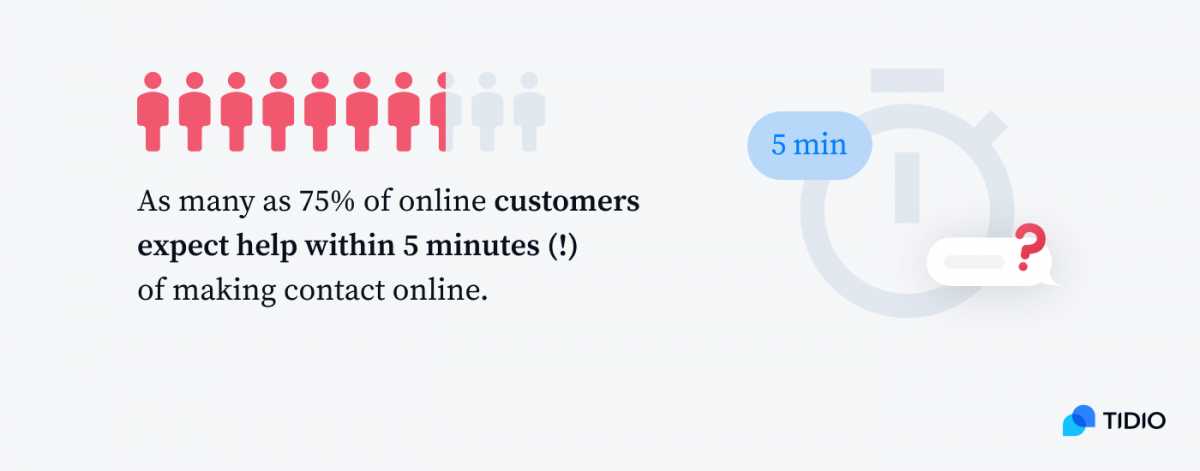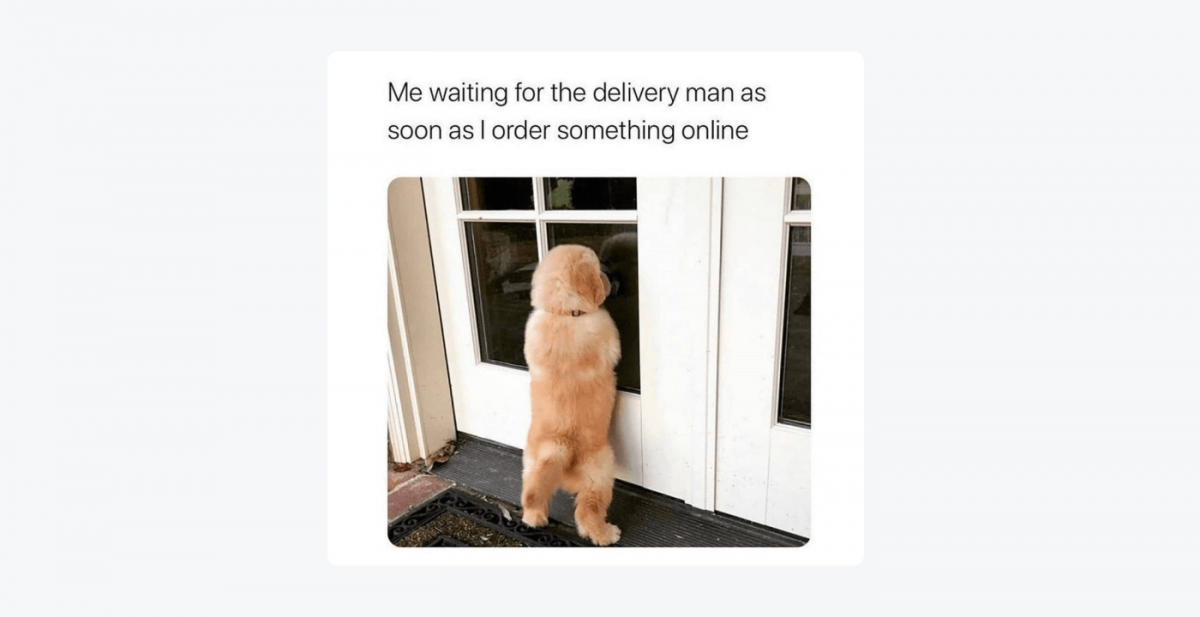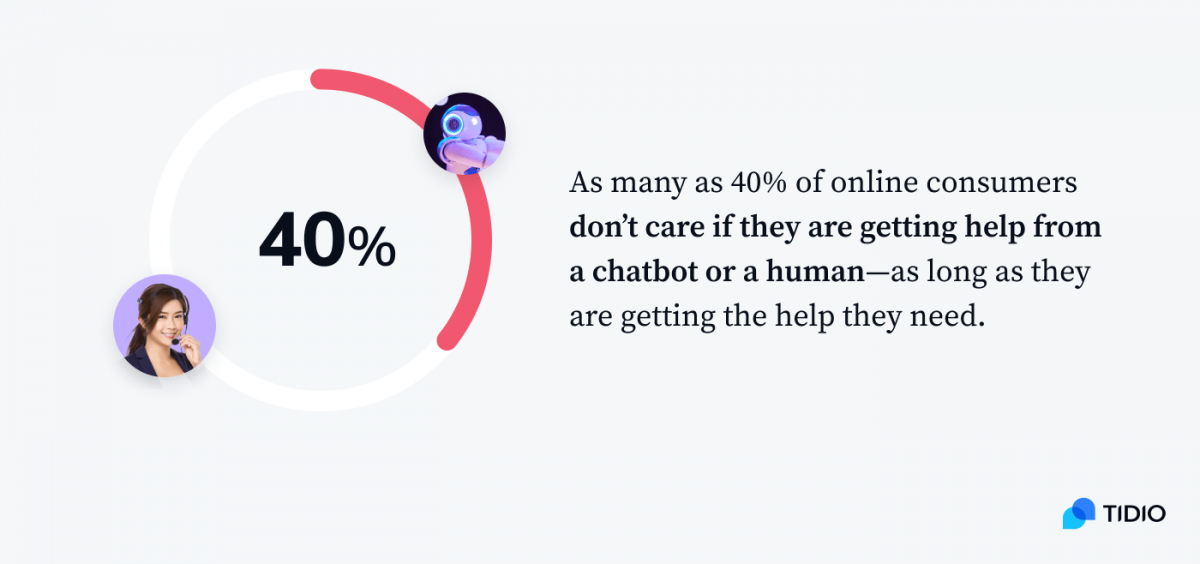Your most unhappy customers are your greatest source of learning.

When you think about customer complaints, your first reaction probably isn’t: “Negative feedback, that’s great! Now I’ll see what I can improve! ”
Sure, it definitely feels better to be praised than to be criticized.
But the truth is—
Any business venture needs feedback to become even better at what it does.
As soon as you learn how to handle customer complaints properly, your company will gain much more than just a resolved customer service issue.
And we will help you with that!
Read on to find out:
- Why customers complain and how this can be beneficial to your company
- How to handle a customer complaint properly in every scenario
- Templates and tips for dealing with common types of complaints
Why do customers complain?
Reading the title of this section, you might think, “What do you mean, why do the customers complain… They are simply unhappy, duh!”.
The truth is, people who share negative feedback with you most likely:
- Got disappointed with a feature or a product, and just need to vent
- Had higher expectations for your company, feel they need to share their disenchantment with you
But—
Esteban Kolsky’s research for ThinkJar has proven that a whopping 91% of customers who are unhappy with a brand will just leave without complaining. And you’ll never know they were unhappy and probably moved on to your competitors.

So, don’t think about customer service complaints in terms of single, irritating issues to solve, but rather in terms of information that provides opportunities for growth, both for your product/service and customer retention.
What if you treat your next customer complaint as a blessing in disguise?
Now, let’s find out what an unhappy customer is most likely to complain about and how to handle customer complaints like a boss.
Handling customer complaints, the efficient way
It’s easy to take negative feedback personally, especially for business owners, who are usually super-focused on perfecting their product or service.
The best attitude to customer complaints procedure is to realize that both you and the customer are playing on the same team. Even if the customer doesn’t know it yet. Add a pinch of personalization, and you’re on the right track to improve customer satisfaction overall.
What are the best practices for dealing with common customer complaints?
- Stay calm. Working with people can be stressful, and negative feedback can fuel emotional responses. However, in this case, it’s definitely better to keep it cool, even if you don’t agree with your customer’s opinion. After all, what they say is not personal. Don’t fight to win, fight for agreement!
- Listen carefully. If a customer is irritated, they might want to vent their frustrations. Of course, you should never accept offensive behavior, but if a customer is confiding about how disappointed they are, you might want to tune in and show them that you listen. You can do that by responding with short phrases such as “Tell me more about this” or “I understand”. This will also calm them down.
- Acknowledge the problem. Once the customer is done describing the problem, write a message that sums it up and requires a confirming response from the customer. For example: “If I understood you correctly, you were expecting your order to arrive by Friday, right?” A customer then confirms what you just said and is reassured that you really listened to them and want to take care of their case.
- Get the facts straight. After the customer has expressed their disappointment, ask additional questions. Be personal and don’t use scripted responses. Make them feel heard and understood.
- Prepare an action plan. Now that you have all the information, offer a solution and present a short plan on what exactly you will do. A good practice is to structure this message according to a “What? So what? Then what?” technique, so the customer knows that you know what exactly happened, what trouble it has caused them, and what is going to happen next to resolve the issue.
Now, let’s analyze the most common complaints you or your customer support team may encounter. We’ve also prepared handy customer complaint response letter templates you can use and adapt for your purposes.
Because we know that each business has its own brand and uses a different tone of voice, you’ll find two response templates for each type of customer complaint: more formal and more casual.
Let’s dive in!
1. Waiting too long for the answer
Customers don’t want to wait hours on the phone or stare at their desktops forever. McKinsey’s research has shown that as many as 75% of online customers expect help within 5 minutes (!) of making contact online.
These 5 minutes may be considered a golden standard as to how quickly a customer complaint must be acknowledged—but we all know that the quicker, the better.

How to deal with customer complaints about waiting too long?
If the customer is waiting too long, their dissatisfaction grows even bigger. To solve this problem in the long run, you need to figure out why this situation takes place.
Possible reasons:
- Your customer service reps are constantly busy because the demand is too high
- Your customer complaint software lacks automation
The best action plan is to start with smart, quick fixes that won’t require overcomplicating the situation, and then move on to more demanding solutions if the situation requires doing so.
→ Quick fix
In this case, a quick fix would be installing a live chat that will allow your customer service team to send canned responses and talk to many customers at the same time. With intelligent live chat, you can quickly scale your customer support team without hiring more people.
See how to provide real-life customer experience online with AI technology
→ Hiring more reps
If the situation repeats despite using automated customer support tools, you should consider hiring more reps to unburden your current team and meet the needs of your company.
While you are working on the long-term solution, your customer service representatives should apologize for the long wait and assure the customer that their issue is being resolved.
Sample email reply to a customer complaint about waiting too long
Formal:
| Dear [name], I am sorry to keep you waiting. I spoke with our [department] and it looks like doing [task] will take [time]. I kindly ask you for patience and at the same time want to assure you that I will follow up by [time], as soon as I receive more details about the case. Feel free to reach out with any questions. Kind regards, [your name] |
Casual:
| Hey [name], So sorry to keep you waiting! We always try to get stuff done as soon as possible, but sometimes things slip and that’s when the delays happen. This is exactly what happened with your case! I found out that this should be solved by [time]. Please bear with me till then, and I will update you as soon as I have more info. Thanks for your patience! Best, [name] |
2. Unavailable product or service
If your customer’s problem is that their favorite product is out of stock, congratulations—it means you have loyal customers!
Of course, customer loyalty doesn’t have the power to erase the service experience of not getting what you want. Therefore, in this situation, you need to go the extra mile to meet customers’ needs.
How do you resolve customer complaints about unavailable products or services?
The best approach is to be as transparent as possible about the restocking of the item and send informative emails. Believe us, in this case, types of customers don’t matter—all customers appreciate proactive customer service.
If they already reached out to you about the product, treat it as a compliment and present the information as clearly as possible. Promise them that they will be the first to know when the item is available again.
Responding to customer complaints about the unavailable product
Formal:
| Dear [name], Thank you for reaching out and your interest in [product or service]! We are currently restocking our supplies and [the product] should become available by [time]. We are aware that waiting may be quite uncomfortable. For this reason, I’m manually adding you to a list that will send you a notification as soon as [product or service] is available. Talk to you soon! Kind regards, [your name] |
Casual:
| Hey [name], First of all, thank you for your interest in [product or service]! It’s great to know that you are our loyal customer. Sorry to say, but [product or service] is currently unavailable. But as soon as I know when we have the delivery of the next batch, I will send you a follow-up. This should happen no later than [date]. I will keep you informed! Best, [name] |
3. Delayed shipping
The best tip present in every customer support guide? Treat your customers just as you would like to be treated when you have to deal with customer support.
This is especially true for retail customer service, where a customer wants a product or service delivered to them as soon as possible.

^ Who didn’t behave like this at least once, when finally having ordered this one cool tech gadget, a dream outfit, or a book they really want to read?
Shipment delays happen, but not informing your customers about the fact that their dream thing will arrive 5 days later will result in tons of negative customer feedback.
How to reduce customer complaints about delayed shipping?
To prevent this kind of customer service complaint from appearing, always be hands-on about the deliveries. Write to customers as soon as you know that they will receive the package later than planned.
If it’s too late, and you already received complaints, apologize about the situation, explain why the delay happened and why you didn’t inform them about this fact before. Be honest and offer some kind of compensation, no matter how small.
How to write a customer complaint’s answer about the delayed shipment?
Formal:
| Hello [name], Thank you for your message. Your order [order number] has not been shipped yet, because [reason]. We have not informed you beforehand, because we received the info from the supplier [time]. I personally checked the status now—your package is on the way, and it should reach you approximately by [time]. We are sorry for the inconvenience and lack of communication. To compensate for this, we would like to give you a discount code [discount code] that works until the end of August, and gives you 20% off on all our [product type]. Don’t hesitate to reach out with more questions. Thank you for your patience, [your name] |
Casual:
| Hey there [name], So sorry that we keep you waiting for [product name]! It hasn’t been shipped yet because [reasons]. But the good news is—I contacted the warehouse and asked them to prioritize the sending of your package, so it should arrive to you by [time] at the latest. Thank you for your patience! In the meanwhile, please enjoy using this code: [code], which will give you [%] off on all [product type]. Hope this will make up for our temporary sloppiness! Best, [name] |
4. Lack of follow-up after making a purchase
Imagine you ordered a product or subscribed for a service, you receive a confirmation email about your payment, and… that’s it. No further information about shipping/start date, no follow-up email, no tracking number, no communication whatsoever, for a day or two.
Even if you received your package after a few days, or logged in to the system to find out if you can use your subscription already, the whole experience would probably be… not recommendable to say the least.
Those, who are less patient, would probably turn into dissatisfied customers and write a complaint about the lack of follow-up.
How do you resolve customer complaints about no follow-ups?
The best solution would be to set up a full follow-up email sequence in your CRM, so the updates are sent out automatically and all customers are well-informed about the status of their purchase.
If you feel that sending automatic updates about every stage of the order is too spammy, you can limit the number of automatic emails to the minimum (for example, purchase completion in progress and purchase send emails).
On top of that, create a chatbot that will answer your customers’ questions when they come back to your website and ask for detailed information about their order. This way, you work on many points of contact and optimize all of them.
See how to provide real-life customer experience online with AI technology
How to reply to a customer complaint about lack of follow-up
Formal:
| Dear [name], Thank you for reaching out to us! We are sorry for the lack of follow-up information about [product or service]. We are constantly working on improving our services, and we are happy you pointed that out. From now on, you will receive [types of messages] every time you make a purchase with us. On top of that, we would like to inform you that you can head to our website at any moment and ask for assistance on our chat widget—you will receive even the most detailed information. Don’t hesitate to reach out with more questions. Best, [your name] |
Casual:
| Hello [name], We’re sorry about not following up about your order [order type]! I can assure you that we’re usually hands-on about all orders, but yours somehow slipped. That’s why I personally made sure that from now on, you will be sent an update every time [action]. We hope this will make you feel more well-taken care of! Best, [name] |
5. Poor customer service in terms of average response time
We’ve already mentioned that disrespecting your customers’ time is a bad idea. Your reps may have the best efficiency, but when they speak to hundreds of customers a day, some conversations may be overlooked, and some customers may not have ALL their responses on time.
This doesn’t necessarily indicate that your reps lose focus, but it may indicate you need better communication tools.
How do you process customer complaints about a long response time?
The best solution to this problem is to use customer complaint handling software that allows you to see unassigned and unopened conversations first. Each operator is then assigned to a specific conversation and the customer always gets the answer quickly thanks to effective prioritization.
Tidio offers such functionality for all your communication channels, so your operators can always stay updated.
How to respond to a customer complaint about slow response time?
Formal:
| Hey [name], I am sorry for the slow response time, and thank you for pointing this out! We are constantly working on processing customers’ requests much faster. At the same time, I am glad to inform you that from now on, you will never have to wait more than 2 minutes for a response from our agents! We made this our highest priority by [action]. We will be waiting for you anytime you need it. Talk to you soon! Best, [your name] |
Casual:
| Hey [name], We’re sorry you had to wait so long for a response from us! I personally made sure this will never happen again by [action], so next time you won’t be waiting longer than 2 minutes. Mark my words! Thanks for your patience and have a great day, [name] |
6. Poor customer service in terms of rep-customer culture fit
Some call it “cultural fit”, some call it “chemistry”, some could argue that it’s just like in real life: not all reps and customers will get along, just like not all people get along.
The problem starts when the customer perceives the operator as uninterested in their case, not willing to help, malicious, or worse—lazy, just because the two are not getting along.
This may seriously affect your business reputation, even if the customer simply misinterpreted the attitude of the agent due to their character differences.
How to handle customer inquiries or complaints about seemingly unprofessional staff?
Your agents should always strive to provide the best customer service, and you should make sure they know how to do it according to your company protocol that’s coherent with your brand.
If there are complaints about your operators, always investigate what went wrong in-depth, not with the mindset to prove them “guilty”, but rather to understand what they can learn thanks to this experience.
Usually, the main culprit is miscommunication. Maybe they were sending ¯\_(ツ)_/¯ shrug emojis to a person who is over 60? Or maybe the tone of voice was too dry for a 19-year-old who wanted to return an iPhone case with MyLittlePony, but didn’t understand how to do it via a form?
There are many ways in which a customer and rep may not get along. The most important thing is to fish out the pattern and learn from it.
How do you answer customer complaints about unprofessional staff?
Formal:
| Hey there [name], Thank you for your message about your conversation with [rep’s name]. We are sorry to hear that you were dissatisfied with your interaction. I assure you that we will look in-depth in [rep’s name] conversation with you and take appropriate actions if necessary. We sincerely apologize, and at the same time, we would like to assure you that this will never happen again. Hope you will talk to us soon. Best regards, [your name] |
Casual:
| Hey [name], We’re sorry to hear you are dissatisfied with [product or service] and even more sorry that [rep’s name] didn’t live up to your expectations in terms of customer service. I’ll look into the script of your conversation and see where things could have been done differently, so this situation doesn’t happen again for you or anyone else. Hope you’ll come back to us soon! Best, [name] |
7. Long resolution time
As many as 78% of online customers want their issues resolved after the first interaction, research found, and honestly: can we blame them? It takes a hot minute to realize that we all want our issues resolved as quickly as possible.

Your customers are no different, and to make them contact you more than once for a simple request may result in complaints about long resolution time and low efficiency.
How to reduce customer complaints about long resolution time?
The prioritization in customer service is key. The best idea is to automate repetitive, simple tasks coming from the majority of the customers, so your reps can fully dedicate themselves to more complex issues that require more time and focus.
This is possible thanks to chatbots that can perform simple actions like checking the statuses of orders and answering simple questions. Of course, we don’t say that you have to use the ones from Tidio, but they can surely do this!
How to respond to customer complaints about long resolution times?
Formal:
| Hey there [name], Thank you for your message about [subject]. We sincerely apologize for the long time you had to wait to have your issue resolved. We want to let you know that we are working on improving our resolution time and because of this, now you can [simple tasks] directly on our website, by clicking on [instructions]. Hope to hear from you soon, [your name] |
Casual:
| Hey [name], We’re sorry for such a long wait to resolve [subject]. All of our [team name] is currently working on resolving this issue, and I will message you as soon as it’s done. Talk to you soon! Best, [name] |
8. Constant transfers
Have you ever had a situation where you call one phone number just to find out you need to call another one, and then wait on hold for 30 minutes to be transferred to another operator?
This is exactly how your customers feel about transfers, whether they happen via phone call or online. It’s no surprise that 70% of consumers are highly annoyed when they hear “I need to transfer you to another operator”.
The most frustrating part is the necessity to explain your issue from the beginning, with all the nuances and details that can be confusing for someone new to the subject. Remember that repetitive explaining is a waste of time for your customer.
How do you process customer complaints about constant transfers?
While investigating the conversation the customer complained about, check the flow to see where the transfer could have been avoided. Is there a way you could organize the customer support verticals better? Or maybe there are too many people who take care of the same type of issues?
Whatever your case is, the customer always needs to feel that their issue is not just another case in the line. If you need to transfer the customer to serve them properly, they need to be informed about it and assured that they won’t need to explain their issue once more because you will take care of it.
Modern live chat tools, like Tidio, make transfers seamless, so the operators who join the chat can read the whole conversation that took place beforehand.
How to reply to customer complaints about transfers?
Formal:
| Hey [name], Thank you for letting us know about [case]! Since we want to improve constantly, we introduced a new system to improve our customer support. Now, if you have a complex issue like [case they complain about] and we need to transfer you to the [department], they will know exactly what we were talking about before, so you don’t have to explain it more than once. On top of that, I would like to inform you that I am your account manager who will have a full overview of your cases to ensure a smoother working process between us. I hope this resolves your doubts about our customer service! Looking forward to talking to you soon! Best, [name] |
Casual:
| Hey [name], So sorry you had to be transferred during the conversation about [subject]! If you have a similar issue in the future, write to me directly on [channel] and you won’t have to explain your issue more than once ever again. 😊 Hope to hear from you soon, [name] |
9. Lack of human interaction
If repeating yourself to the human agent is frustrating, then having to repeat yourself to software must be a nightmare. Customer service automation can be beneficial for your customer support, but it needs to be done in a smart way.
If that’s not the case, you will end up with the opposite of what you were trying to avoid—even more customer complaints. After all, as many as 40% of online consumers don’t care if they are getting help from a chatbot or a human—as long as they are getting the help they need.

Resolving customer complaints about lack of human staff
Chatbots can perform simple tasks and help customers get the information they need. However, they should provide the option of a transfer to a human operator if an issue is too complex, and this option should be available after no more than two or three levels of automated conversation.
This balances out the automation and human touch in your customer service efforts.
Responding to a customer complaint about an automated conversation
Formal:
| Dear [name], Thank you for reaching out about your issue with [issue]. We would like to inform you that the case was taken over by our [department] team and should be resolved by [time]. We will keep you informed! Furthermore, we are truly sorry that our virtual assistant did not manage to resolve it for you, and we understand your concern about your inability to contact our team directly. We strive to keep our customer support as available as possible, and our chatbots were supposed to be an example of that. After receiving feedback from you, we changed the structure of our virtual assistants’ functionalities, and from now on, you can contact our human support team directly from the widget, once you [action]. We hope it will improve your experience with us. Talk to you soon, [your name] |
Casual:
| Hey [name], Thanks for your message! We are sorry that our chatbot was unable to solve your issue, and it took so long. As of today, you can contact our agents directly once you [action]. I hope you’ll come across no AI barrier between us ever again! 😊 Have a great day, [name] |
10. No response on social media
Nowadays, before browsing the knowledge base or FAQ, your customers will try to contact you through your social media channels like Facebook or LinkedIn. They will expect a quick answer, too! Facebook even gives you the business badge “very responsive to messages” on your profile, if you’ve answered 90% of messages within 15 minutes in the last 7 days.
If you don’t treat your social media as another customer service and sales channel, you are missing out! You might even earn a few customer complaints from people who reached out to you and didn’t get any answer.
Social media customer complaint management system
Managing many communication channels can be difficult because you and your customer support team must be always hands-on to respond to all messages on time.
To eliminate the chaos, you can use a multichannel tool that will connect email, website live chat, and integrate Messenger live chat in one panel. A solution like this will help you keep social media, email, and live chat in one place.
Customer complaint response example about lack of customer service on Messenger
Formal:
| Hey there [name], Thank you for reaching out, and I sincerely apologize for responding so late! To answer your question, [answer to the outdated question], but you may already know it by now! I know that our first contact was not satisfying, but to make up for it, we would like to offer you a discount code, [code], that will give you 10% off for [product/service] for the next 2 months. Oh, and one more thing—from today on, you can write to us here, on Messenger! Contact us anytime from [time] to [time] during [time of the week]. Hope to talk to you soon! [your name] |
Casual:
| Hey [name], I know it’s been a long time since you wrote to us, and we want to let you know we are sorry for that! At that time, we were not so social-media savvy. But the good news is that, starting today, you can write to us anytime! 😌 Oh, and this is the discount code [code] you can use for [product or service] until [time], to make up for this bad first impression. Hope to talk to you soon! Best, [name] |
Key takeaways
By now, you should know that customer complaints can be a blessing in disguise for your company’s growth.
Here’s a quick recap:
- Customer complaints don’t mean your product service is bad altogether, but they rather indicate the areas that need improvement.
- Customer service complaints can be handled in a sympathetic and efficient manner, so the customer feels well-informed and taken care of, and you improve your customer service efforts.
- Customer service automation tools such as live chat and chatbots can significantly improve your customer support by helping you to reduce customer complaints and handle them faster.
What are your best practices for dealing with customer complaints? Do you need help with setting up an automation tool that will elevate your efforts?
Feel free to reach out! We will gladly help you improve your customer service efficiency!

